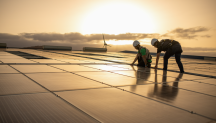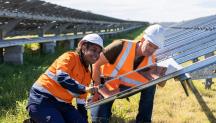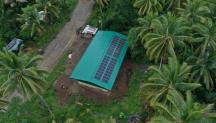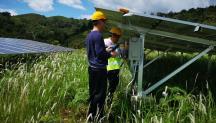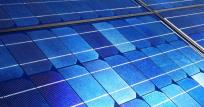
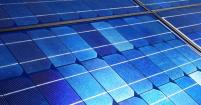
Solar PV Waste Offers Significant Business Opportunity
Newsletter
The solar industry is booming. There was 227 gigawatts of installed solar PV capacity in 2015 and this figure is expected to reach 4,500 by 2050 - a more than 1,800% increase.
This staggering deployment means good things for the world's climate, economy and society, but it will also result in a huge amount of electronic waste as solar panels reach the end of their roughly 30-year life span.
But with this waste, comes new opportunity.
A new report released today by IRENA and IEA-PVPS, End-of-Life Management: Solar Photovoltaic Panels, provides the first-ever projection of future solar PV panel waste volumes. It estimates that by 2050, solar PV panel waste (comprised mostly of glass) could total 78 million tonnes. If fully injected back into the economy, the value of the recovered glass and other raw materials could exceed $15 billion by 2050. This potential material influx could produce 2 billion new panels or be sold into global commodity markets.
“With the right policies and enabling frameworks in place, new industries that recycle and re-purpose old solar PV panels will drive considerable economic value creation and will be an important element in the world’s transition to a sustainable energy future. This brings about new business opportunities to ‘close the loop’ for solar PV panels at the end of their lifetime.” - IRENA Director-General Adnan Z. Amin
The opportunity at hand is impressive, but the report urges that preparations for the surge in end-of-life PV panels must begin now. The report suggests that addressing growing solar PV waste, and spurring the establishment of an industry to handle it, would require: the adoption of effective, PV-specific waste regulation; the expansion of existing waste management infrastructure to include end-of-life treatment of PV panels, and; the promotion of ongoing innovation in panel waste management.
Some countries, like the European Union, are already moving in the right direction. EU was the first to adopt PV-specific waste regulations, which include PV-specific collection, recovery, and recycling targets. EU’s directive requires all panel producers that supply PV panels to the EU market (wherever they may be based) to finance the costs of collecting and recycling end-of-life PV panels put on the market in Europe.
End-of-Life Management: Solar Photovoltaic Panels, is the second of several solar-focused publications IRENA is releasing this summer. Last week, IRENA released The Power to Change, which predicts average costs for electricity generated by solar and wind technologies could decrease by between 26% and 59% by 2025.
Later this week, IRENA will release Letting in the Light: How Solar Photovoltaics Will Revolutionize the Electricity System – which provides a comprehensive overview of solar PV across the globe and its prospects for the future.
